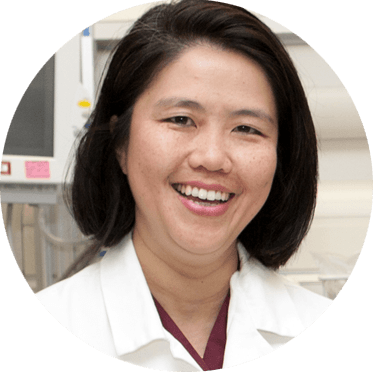In this new installment in the “How I Work Smarter” series, we are featuring Dr. Anand Swaminathan (@EMSwami), who seems to have infiltrated all educational digital platforms that we use. As the faculty reviewer for the evidence-based EM blog EM Lyceum, regular contributor for the EM:RAP podcast, associate editor for the REBEL-EM blog, and Editor for R&R for the Life in the Fast Lane blog, he also serves as the Assistant Program Director for the NYU/Bellevue EM residency program in his free time! After Anand was called out by Dr. Salim Rezaie’s Working Smarter blog post, he shares his own useful pearls.
-
 Name: Anand Swaminathan, MD, MPH
Name: Anand Swaminathan, MD, MPH - Location: New York City, NY
- Current Job: Assistant Professor of Emergency Medicine and Assistant Residency Director at the NYU/Bellevue Emergency Department
- One Word That Best Describes How you Work: Efficiently
- Current Mobile Device: iPhone 5
- Current Computer: MacBook Air
What’s your office workspace setup like?
My office is less of a place and more of wherever I am at that time. Although I have an office at work, I rarely use it. For my home office, I like having a large desk that I can spread out on with two screens. My mic is always ready to go for an impromptu recording session. I’ve got a substantial commute so the train is my office as well. All I need is a lightweight laptop, an external charger and I’m ready to go.
What’s your best timesaving tip in the office or home?
I avoid the work-based office as much as possible. Aside from the added commute time (2-3 hours), my work office is ripe with distractions since I share it with 2 other (brilliant) educators. I also find that when I’m at work, more and more projects seem to creep in to my workspace. Acoustic limitations prevent recording at work as well. My home office, on the other hand, is quiet and free of major distractions. Plus, being at home reminds me that work can wait when the family is around.
What’s your best timesaving tip regarding email management?
I’m an Inbox Zero guy like Salim and Michelle. I answer urgent/emergent emails immediately and convert everything else from an email to a task for my calendar program (Google Calendar). Using a task list allows me to prioritize assignments and set deadlines. It also feels good to check things off a list. The sense of accomplishment keeps you going. I also utilize an extensive list of subfolders so that I can rapidly locate any email at any time.
Something I’ve started doing recently is setting my iPhone to delay delivery of emails during my clinical time. There are already enough distractions in the clinical area and if I see the little number on the mail icon, I know I won’t be able to resist checking it.
What’s your best timesaving tip in the ED?
I always document as I go instead of saving notes for the end of the shift. When my shift is done, I want to get home and see my family (or get to sleep so I can see them in the morning). I have no desire to stay an hour after shift to finish up notes. Additionally, documentation suffers if we delay between the encounter and charting. I was also advised by my first mentor to always take all the necessary tools you’ll need when examining a patient into the room with you. Sore throat? Make sure you have a tongue depressor. Abdominal pain? I bring the ultrasound in with me.
ED Charting: Macros or no macros?
No macros. Writing out my history and physical examination, assessment and plan helps with my cognitive processing of the patient’s case. The 5-7 minutes it takes me to do this gives me time to incorporate logical, methodical thinking with the initial instincts and heuristic thoughts on the case.
What’s the best advice you’ve ever received about work, life, or being efficient?
On time means being ten minutes early. My Dad taught me this. This isn’t just for clinical shifts but it applies to every deadline. I always shoot for coming in a couple days ahead of schedule. It shows people that you deliver on what you promise and that you take their project seriously. It also aids in the epic battle of learning to say no. If I can’t deliver ahead of the given deadline, it’s probably a project I should turn down.
Is there anything else you’d like to add that might be interesting to readers?
- Great ideas occur when distractions are at a minimum. Make time to do nothing else but think. I use my daily run for this. No music, no phone, no distractions.
- Learn to say no . . . but not early on in your career. Saying yes is vital to development. Even projects that don’t seem particularly interesting may lead to relationships with people that you’ll want to work with later on.
- Enjoy what you’re doing now instead of always thinking where you’re going next. If you enjoy a project, it won’t seem like wasted time later even if the goal isn’t reached.
- Embrace flexibility – “Be formless, shapeless. Like water. You put water into a bottle and it becomes the bottle. You put it in a teapot, it becomes the teapot. Water can flow or it can crash.” – Bruce Lee
Who would you love for us to track down to answer these same questions?
- Rob Rogers
- Rob Orman
- Ken Milne
Author information
The post I am Dr. Anand Swaminathan – Co-Creator for EM Lyceum & Omnipresent Educator: How I Work Smarter appeared first on ALiEM.


